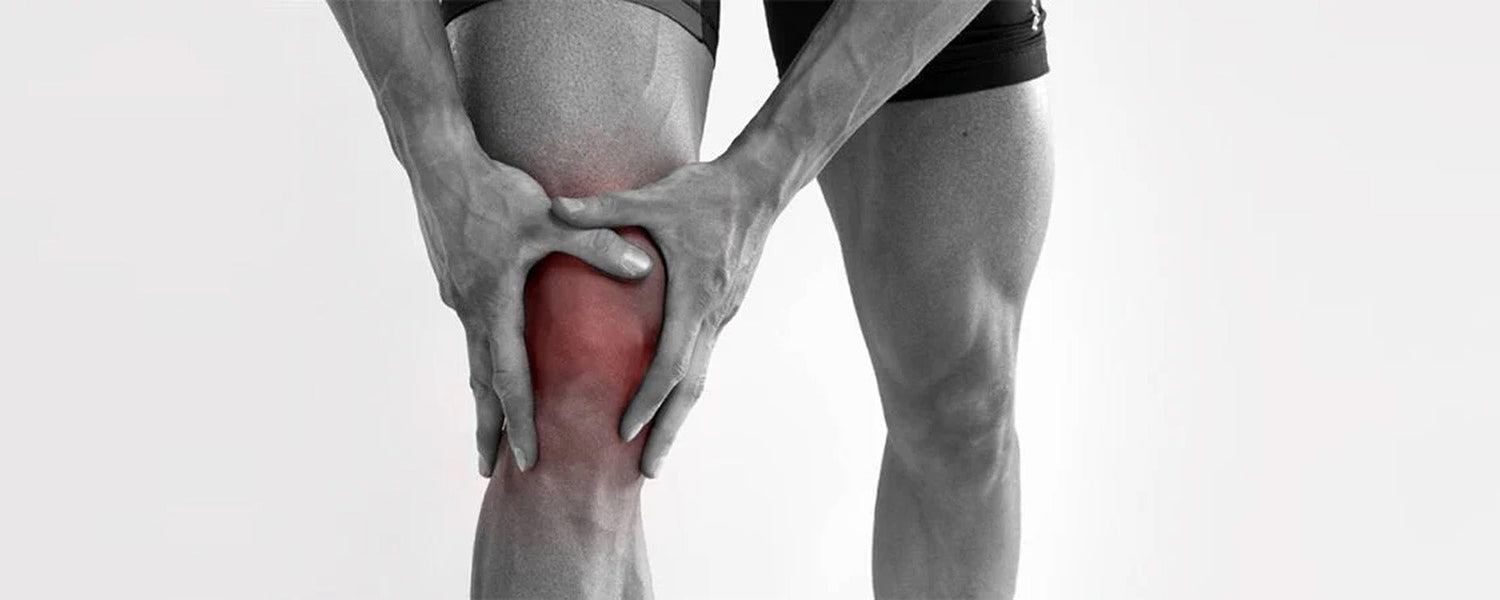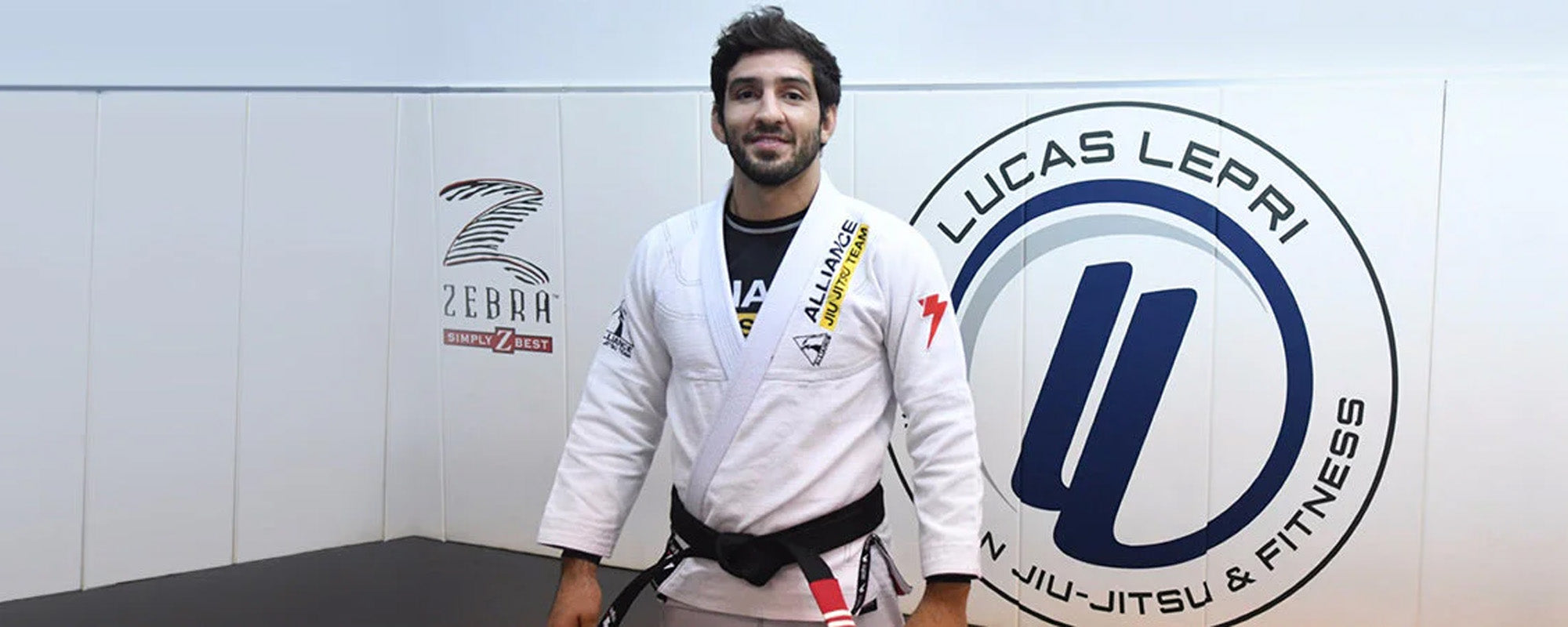BJJ training involves strengthening all body muscles. It helps practitioners to perform well during fights. BJJ training is a tough and physically demanding exercise, so practitioners often suffer from injuries and muscle tears. A torn meniscus is one of these injuries.
A torn meniscus or meniscal tear is a knee injury that causes acute pain and swelling inside the knee. In severe cases, the pain can become so excruciating that sometimes it hinders the body's mobility and the individual has to go through surgery. BJJ practitioners have to skip their training sessions to heal from a meniscal tear. While resting, they often lose their strength. So to compensate for this loss, they usually perform low-conditioning exercises.
Table of content
1. What is a Torn Meniscus in BJJ?
A torn meniscus is a knee injury that is common in combat sports. It occurs when the protective cartilage of the knee is damaged or torn. The individual suffers from a meniscus tear because of a sudden twist or imbalanced movement of the knee.
The knee joint is a sensitive joint. It is encapsulated in cartilage to ensure safety against injuries. Often during BJJ rolling or sparring sessions, fighters put immense weight on their knees which can cause meniscus tears in their knees. The cartilage which protects their knee is C shaped and acts like a cushion between their shin bone and thigh bone.
When this cartilage is damaged due to any abrasive force, it causes tearing of the meniscus which induces intense pain in the knee. If it gets severe, it can lead to the complete immobilization of the knee.
2. Types of Torn Meniscus
There are cartilages inside the knee which protect it and provide stability and ensure fluid movement. A meniscus tear or torn meniscus can be extremely painful and crippling.
2.1. Acute Tear
It is an isolated knee injury. It happens due to sudden traumatic force on the knee. It mostly happens when a fighter's knees get twisted during sparring, rolling, or fighting. It is the sudden tearing of the meniscus.
2.2. Chronic Tear
A chronic tear is more severe than an acute tear, the chronic tear is basically a progressive degenerative disease of the meniscus. The pain in chronic tears is not continuous, rather it involves repeated episodes that consist of acute knee pain. In chronic tears, the practitioner’s knee can swell to a much larger degree than in an acute tear. Medical help is necessary for chronic tears. In some cases, the fighter might need knee surgery to cure chronic tears. You can have episodes of immense pain that will drain all the energy from your body.
The serious concern about chronic tears is that the cartilage has degenerated. More appropriately put, the cartilage loses its function and the fighter can not even move his leg because of bouts of pain emerging as the leg is moved.
3. BJJ Training With A Torn Meniscus
BJJ practitioners have a strict BJJ training regime. They usually do not skip their sessions or training no matter what. No doubt, these are the fighters who achieve tremendous success in BJJ tournaments. BJJ training can cause some physical effects on the bodies of the practitioners as it is strenuous training. If they feel any pain, they should definitely pay attention to it.
A meniscus tear is an acute cause of pain for the fighter, he/she should not perform any strengthening exercises which can become a toll on the injured knee.
Still, with a meniscus tear, there are some exercises that BJJ practitioners can perform to keep their bodies strong and maintain healthy muscle movement. A torn meniscus can even go on for a prolonged period of time but that does not mean that the practitioners should lose the strength that took them a great amount of time to acquire.
3.1. Conditioning Exercises Without Active Participation of Legs
When you feel strong enough that you can move your body without applying pressure on your knee, you must start with low-conditioning exercises that do not involve much movement in your legs. It is because of the acute pain that directly affects your whole body. It might be strange to hear that only because of a knee injury, your whole body becomes weak but that is the truth.
For conditioning exercises, you must perform some calisthenic exercises.
Regular Pull-ups
Regular pull-ups do not require any heavy equipment. You can perform pull-ups even at home with just a bar. They strengthen your back along with the muscles of your chest, shoulder, and arms.
To perform pull-ups:
- You must place your hands on the bar while your arms, are directly under your shoulders.
- You must slowly pull yourself down because a jerk can cause pain.
- The fighter then lowers himself slowly down. He must pause for a second while remaining in the lower position.
- You can repeat the pull-ups 5-6 times and then repeat 3-4 sets of the exercise.
Chin-Ups
The primary benefit of chin-ups is, they help in strengthening the upper arms of the fighter. Due to a torn meniscus, when BJJ practitioners can not move his/her leg or legs, they must focus on the core strength that will help them to bear the excruciating pain of a torn meniscus. They are more helpful for bicep activation.
- You can place your arm on the bar with your palms gripping from the front bottom position.
- Then slowly pull yourself to the point where your chin reaches above the bar, at the top position.
- After slowly lowering yourself on the button position, pause for a second and then repeat the process 5-6 times with 3-4 sets.
- The fighter must control his legs from increased movements so that he/she does not feel much pain.
3.2. Low-Intensity Cycling
If you can tolerate some bending in your knees, you must do low-intensity cycling. If the meniscus tear is not deep and damaging, you can try some low-intensity cycling as long as you don't feel a lot of pain. You must use gear that will help you to push your legs easily.
The cycle must be large so that you do not have to bend your knees to a greater extent. You can also use a spinning bike in the gym for that purpose.
3.3. Train Your Mind
Because of a severe meniscus injury, if the fighter is unable to perform exercises that strengthen his/her core muscles, he can opt for low-intensity recommended workouts. Even in the recovery period, remaining idle can be damaging to your BJJ game, body movement, and elasticity.
3.4. Watch Your BJJ Classes
As you can not train in your BJJ classes, you must attend them. The purpose of just showing in BJJ classes is that you can watch other fellow fighters while they are training. Even by watching different practitioners roll or fight, you can learn how to develop a good BJJ game.
3.5. BJJ Gi Pull-Ups
BJJ Gi pull-ups are very much similar to regular pull-ups. The main difference between the two is that BJJ Gi pull-ups also induce grip strength. While having a torn meniscus, fighters can still develop grip strength.
To perform BJJ Gi pull-ups:
- You can wrap your Gi jacket around the pull-up bar.
- Grabs the collar of the Gi from both sides and slowly pulls yourself in the upward direction.
- You can pull yourself closer to the bar and hold the position for a few seconds.
- Repeat the exercise 5-6 times and complete 4-5 sets.
3.6. Australian Pull-ups
The Australian pull-ups focus on the upper body muscles such as the biceps, abdominal muscles, rear deltoids, and latissimus dorsi.
To perform Australian pull-ups:
- The fighter uses a bar that is about waist height.
- He/she grips the bar with his/her hand that is shoulder width apart.
- You can keep your injured meniscus knee straight and bend your healthy leg.
- Lift yourself until your chest touches the pull-up bar.
- You can then repeat the exercise 6-10 times with 3-4 sets.
3.7. Abs Without Bending Knee
It will build the abs with almost no exertion on the knees.
To perform this exercise:
- The practitioner lies straight on the ground.
- He/She lifts his/her head and legs from the ground simultaneously.
- You can bring your one leg up while keeping the meniscus tear leg straight.
- Then bring your other leg while keeping it as straight as possible.
3.8. Meniscus-Friendly Dips
Meniscus-friendly dips are good for the upper body muscles as well as the pelvic region. They also help to maintain good body posture.
To perform meniscus-friendly dips:
- The BJJ practitioner places his/her hands on a knee-height bar.
- Your palms must face downwards on the ground.
- Then bring yourself down as if you are trying to sit while keeping your meniscus-torn knee straight.
- Bends your healthy knee only to a slight degree.
- With torn meniscus, you can perform this exercise 6-10 times with 3-5 reps.
This exercise can only be performed if the meniscus tear is less severe and can heal without medical help. Otherwise, this exercise can be harmful for you.
3.9. Hamstring Heel Digs
Hamstring heel digs are performed to strengthen your hamstrings and abdominal muscles, which can wear off in the recovery period of a meniscus-torn knee.
To perform hamstring heel digs:
- You can lie on the ground with your knees bent to a smaller degree and your feet flat on the ground.
- Lift your feet so that only your heels are touching the ground.
- The fighter digs his heels into the ground and then slides 4-6 inches away from his body.
- He/She then bring the heels back toward his body and repeats the exercise 8-10 times.
- As you have to bend your knee a little more in this exercise, that’s why the resting period is a bit longer, 30 seconds- 1 minute. The resting period can increase if you feel more pain.
4. Meniscus Microfractures
Meniscal microfractures are abrupt twisting forces, when the knee is bent or when the foot suddenly lands on the ground. It is more severe and serious than a torn meniscus. It occurs in almost 1% of people who suffer from a torn meniscus. For its cure, the BJJ fighter needs surgery. It is also called a “secondary tear”.
5. Symptoms of A Torn Meniscus
The symptoms of a torn muscle are sometimes not easy to recognize but the BJJ practitioner must not be careless of how his/her body behaves and responds to different techniques and exercises. Some symptoms of a torn meniscus include:
- Well-localized and extreme pain in the knee.
- Swelling of the knee.
- Bouts of pain while bending or twisting the knee.
- Production of extra joint fluid in the knee leads to arthritis.
- Buckling of the knee.
- Difficulty in putting weight on the knee.
6. Recovery Time of A Torn Meniscus
Recovery time for a torn meniscus depends on the seriousness of the situation. If you rest for a significant amount of time while doing some low-conditioning exercises, it will take less time to recover.
In most cases, a torn meniscus can improve within 4-6 weeks. If surgery is involved, the recovery period can be longer.

7. FAQs
7.1. What BJJ Exercises or Techniques Should be Avoided While Suffering from a Torn Meniscus?
When suffering from a torn meniscus, the BJJ fighter must not be involved in intense rolling or sparring sessions. He/She must not perform deep squats and also avoid twisting his knees.
7.2. Is Surgery Necessary for a Torn Meniscus?
A torn meniscus is a common knee injury. As long as it is not chronic, you do not need surgery. Physical therapy exercises can help you to get rid of meniscal tears.
8. Conclusion
To endure excruciating pain against the meniscal tears, BJJ fighters along with physical therapy exercises must also perform some BJJ exercises. BJJ exercises keep your body and muscle in shape while also building muscle and grip strength in your upper body.
Photo Credit: @aminoco













Leave a comment
This site is protected by hCaptcha and the hCaptcha Privacy Policy and Terms of Service apply.